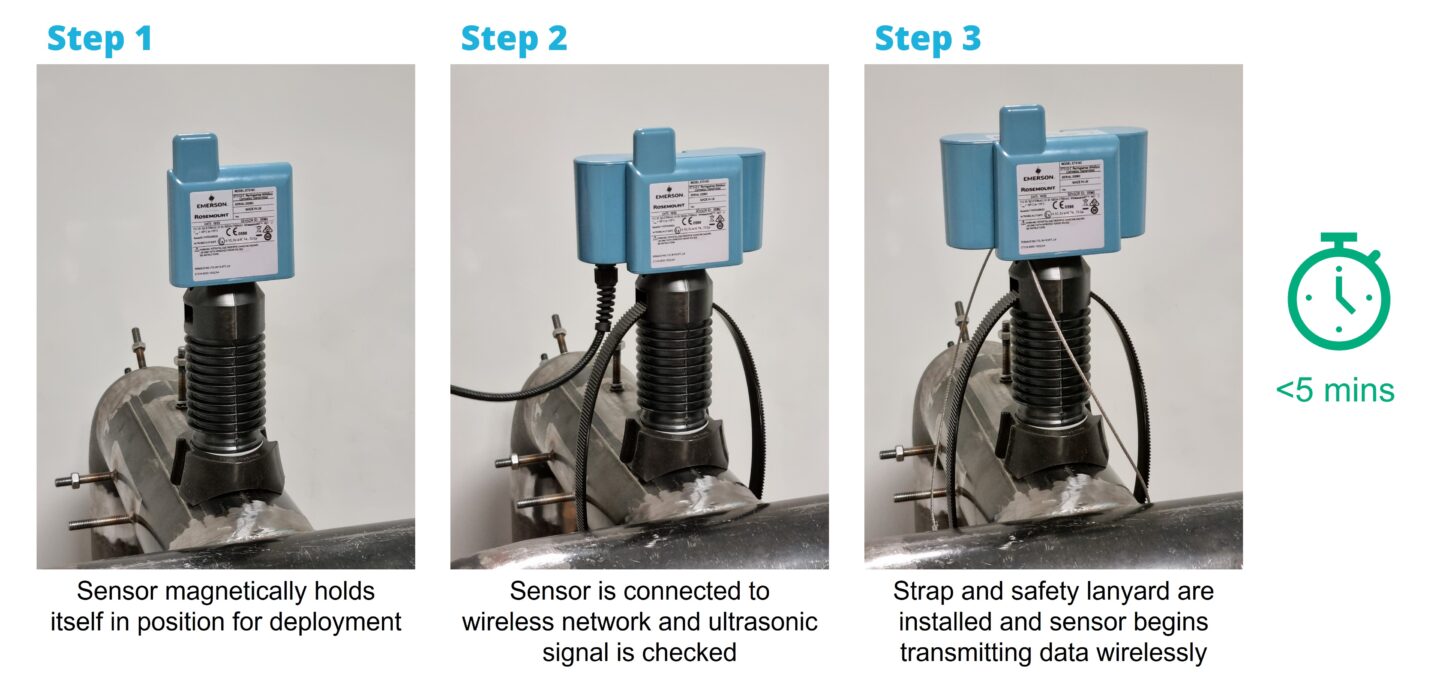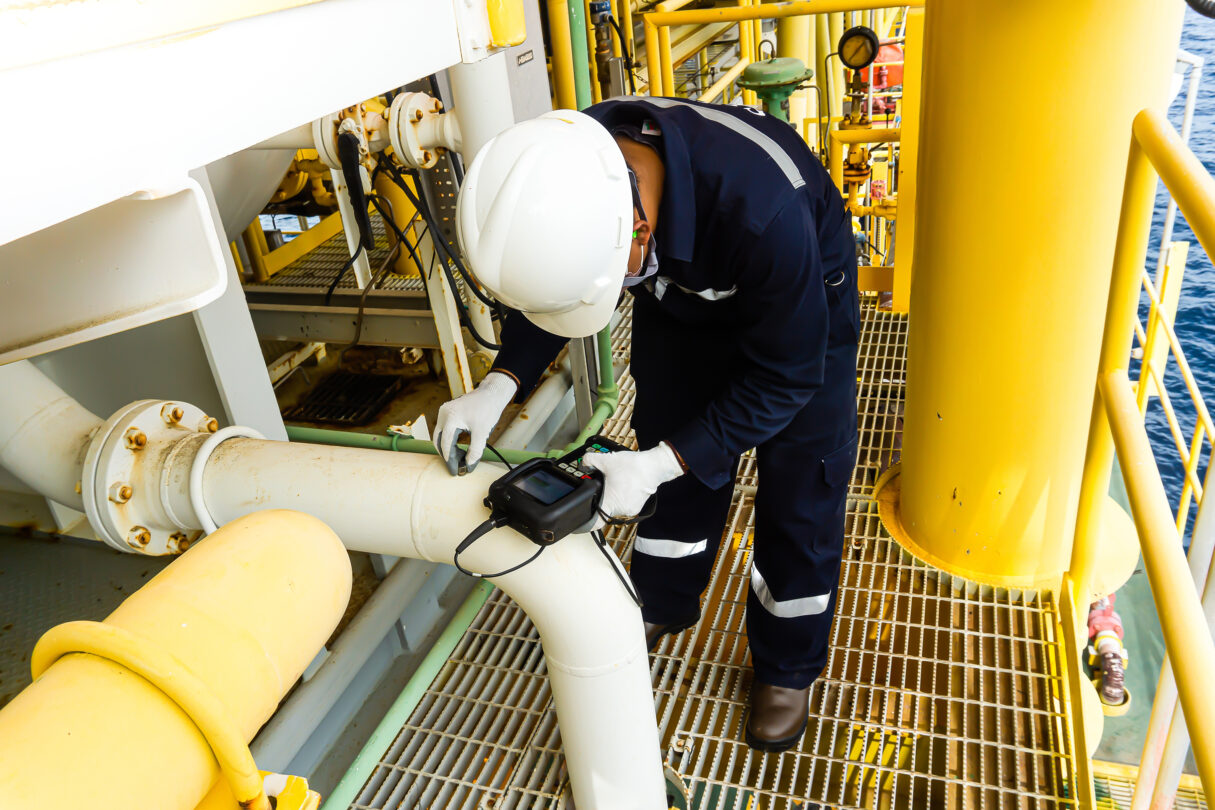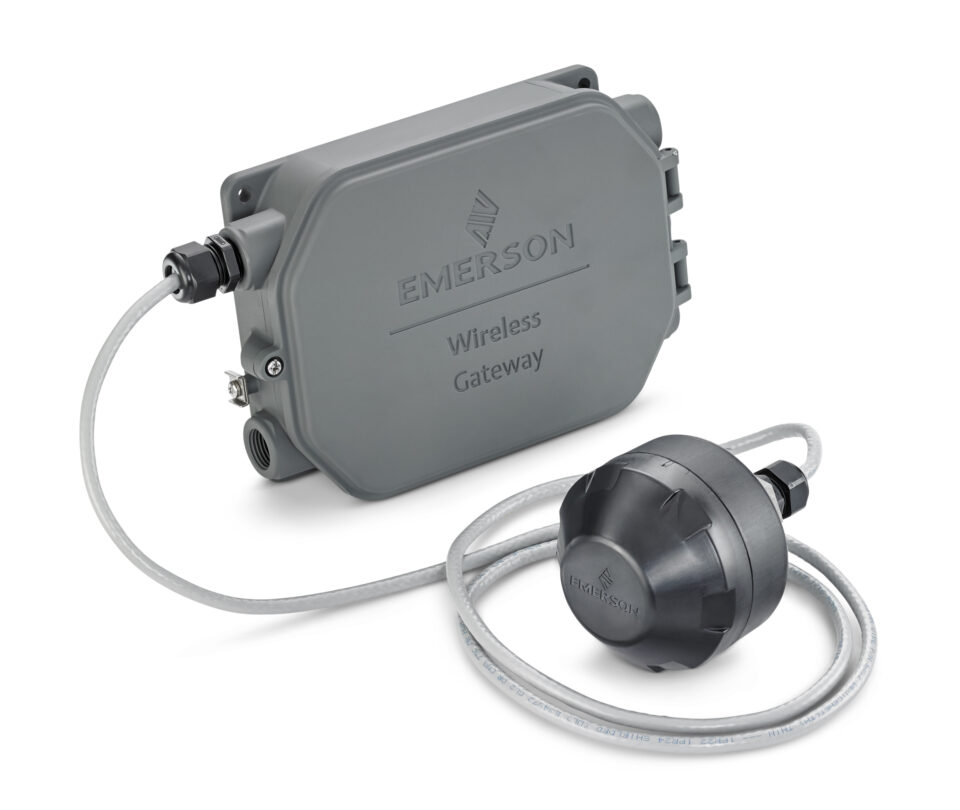Introduction
If you are reading this, then it’s likely that you are considering investing in an ultrasonic thickness corrosion monitoring solution to improve visibility into the health of your facility. Now that you’ve decided there is a compelling reason to install such a solution, how do you decide which vendor and technology to go with, considering there is a range of different options available?
I have identified five key considerations when looking to invest in corrosion monitoring technologies based on my eight years’ experience working with such solutions.
1: Ease of specifying and range of measurements
The first thing after deciding you will invest in a solution is checking that the technology or vendor you have selected can actually cover the range of applications you are looking to monitor. Considerations such as measurement range, temperature range, supported metallurgies, and wireless protocol would all be considered important.
A wide range of thickness measurement is essential across the vendor’s portfolio, even if that is spread across a range of products. There may not be a ‘one size fits all’ approach but if you are dealing with one manufacturer it makes life easier. Emerson’s Rosemount™ Wireless Permasense products have a broad range of thickness measurement from 2mm (0.079”) to 150mm (5.9”).
Temperature range is also key. Again, this might not be covered by a single product, but ensuring that the vendor offers sensors covering your entire application range is prudent, as you’ll unlikely want to mix vendors later. Rosemount Wireless Permasense sensors are usable from -40 °C (-40 °F) to +600 °C (1112 °F), even from a single product which utilises patented waveguides that are designed for monitoring from the ground up.
Metallurgies support again is essential because if the sensor is not compatible with your materials, it is just not going to work. Rosemount Wireless Permasense sensors support all metals and have been proven to work on many different materials across the install base of 30,000 sensors worldwide. Things like coatings should be considered too – do these have to be removed to install the sensor? Rosemount Wireless Permasense products can measure through that coating, with no removal needed, so it’s easy to retrofit to any application.
Lastly, the wireless protocol must work for you. Most modern process plants are already familiar with WirelessHART® which is one of the standard industrial wireless protocols. If you already have infrastructure installed then it can be utilised with no reconfiguration, meaning it is very fast to get deployed.
2: Ease in installation and maintenance, longevity of service
The above leads nicely into this topic, which is really talking about how easy it is to install the system. If start-up takes weeks or months and you have a tight timeframe, it’s not going to work for you.

Installation of a Rosemount Wireless Corrosion Transmitter is fast and easy, and typically takes less than five minutes to complete.
This is where solutions with a sensor designed for monitoring from the ground-up come to be the best choice. ‘Shoe-string’ solutions of tied together ultrasonic transducers with separate wireless backhauls usually result in overly complex installation. Other things like couplant (be it a liquid or solid couplant) should also be avoided, as these usually need regular maintenance due to environmental exposure. Handheld ultrasonic thickness (UT) transducers are designed for exactly that – use in the hand! When installed for long periods of time, the performance is particularly poor. Again, tying into why sensors designed from the ground up for monitoring are key. Rosemount Wireless Permasense sensors are, with patented ultrasound technologies, backed up by over 12 years’ experience, and effectively creating the first UT corrosion monitoring solution. They typically take under five minutes to deploy in location, use no couplant, and start sending data immediately.
3: Reliable data transmission
Once you have the sensors installed, getting the data back to your desk is critical. That is the whole point after all – you don’t want to be going into the field to do any retrieval from the devices, otherwise this is a barrier to getting access to your critical asset health information. Many wireless standards exist, but it’s crucial that you have a secure, robust, and reliable network so that all stakeholders in your business are on board. If the solution does not meet all these criteria, it will be hard to quickly deploy. That is why using well established wireless technology like WirelessHART is a great move – did you know that WirelessHART has a combined 19 billion operating hours across the 54,000 networks deployed globally? Can you be sure that alternative protocols will be supported universally in your organisation, and can you be sure the protocol will even exist in 10 years’ time?
4: High quality and accurate data
Bringing back the data is the first step, but is the data accurate enough to be useful? As the old adage goes “rubbish in, rubbish out”. The key is getting a good and reliable measurement in the field in the first place. Whilst this ties into the ease in installation and specifying piece, how the thickness data is calculated is critical. It’s well known that permanent ultrasonic thickness measurements will vary by tens or more microns over time as the wear on the metal occurs unevenly. That is why it is critical to eliminate these effects in signal processing. Whilst some vendors are not capable of doing this, Rosemount Wireless Permasense sensors use patented AXC signal processing, which stands for Adaptive Cross Correlation. This process virtually eliminates the effects of roughness, an almost inevitability of any corrosion, giving smooth data trends. The importance of this is the whole driver behind monitoring in the first place – how can you know what is happening and when if the data is not granular and repeatable enough?
With Rosemount Wireless Permasense sensors offering as good as 2.5 micron (0.000098”) repeatability between measurements, why would you settle for anything less? And what does this mean in practical terms? Well, repeatability = response time, and that means picking up metal loss in days rather than weeks and months.
5: After sales support and service
Lastly, problems can happen. Questions occur. Who do you turn to for support and guidance if this happens? Dealing with a vendor who is there to support you should something go wrong is key. You want to feel supported and understood. And it doesn’t just stop at problems. For example, if you would like support in analysing data, or understanding particular corrosion activity, is the company you’re working with able to support with that?
With Emerson’s Connected Services, you have access to corrosion expertise any time – with remote data analysis and support, as well as local field service to remedy issues in days, not months.
Conclusion
In conclusion, above are my five key factors to consider when looking to deploy corrosion monitoring in your facility. It’s important that these are addressed, because it could mean the difference between operating efficiently or unplanned downtime and plant shutdowns. Every component of the system is a building block which, if poorly designed or broken, equates to a useless solution. Effective monitoring technologies can directly help your facility maximise utilisation, increase profitability, and better plan maintenance.
Rosemount Wireless Permasense products are deployed in over 350 facilities worldwide, with over 30,000 sensors, and a cumulative 40 million wall thickness readings sent. With solutions for every application, please reach out today with any enquiries or visit our website.






